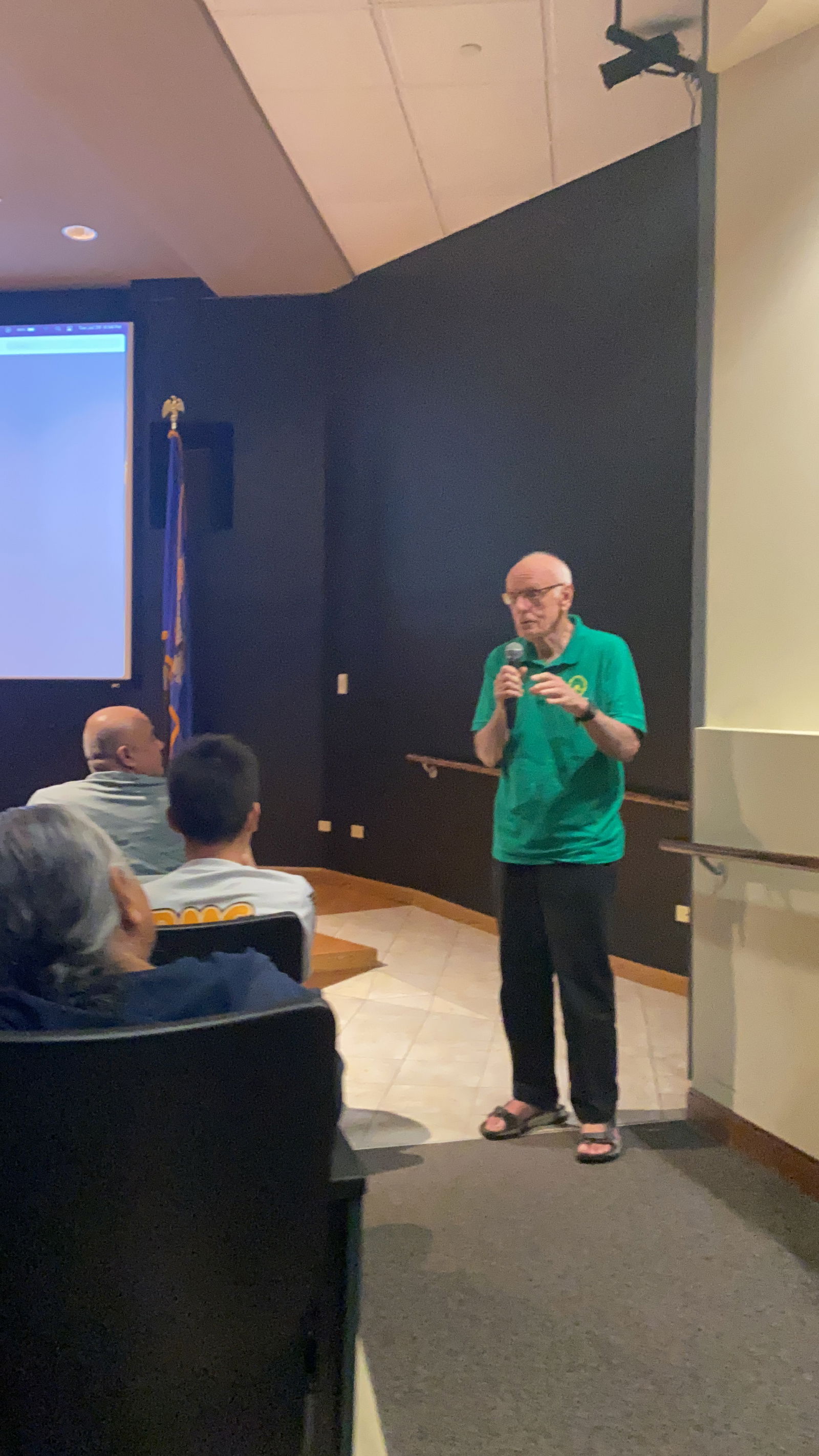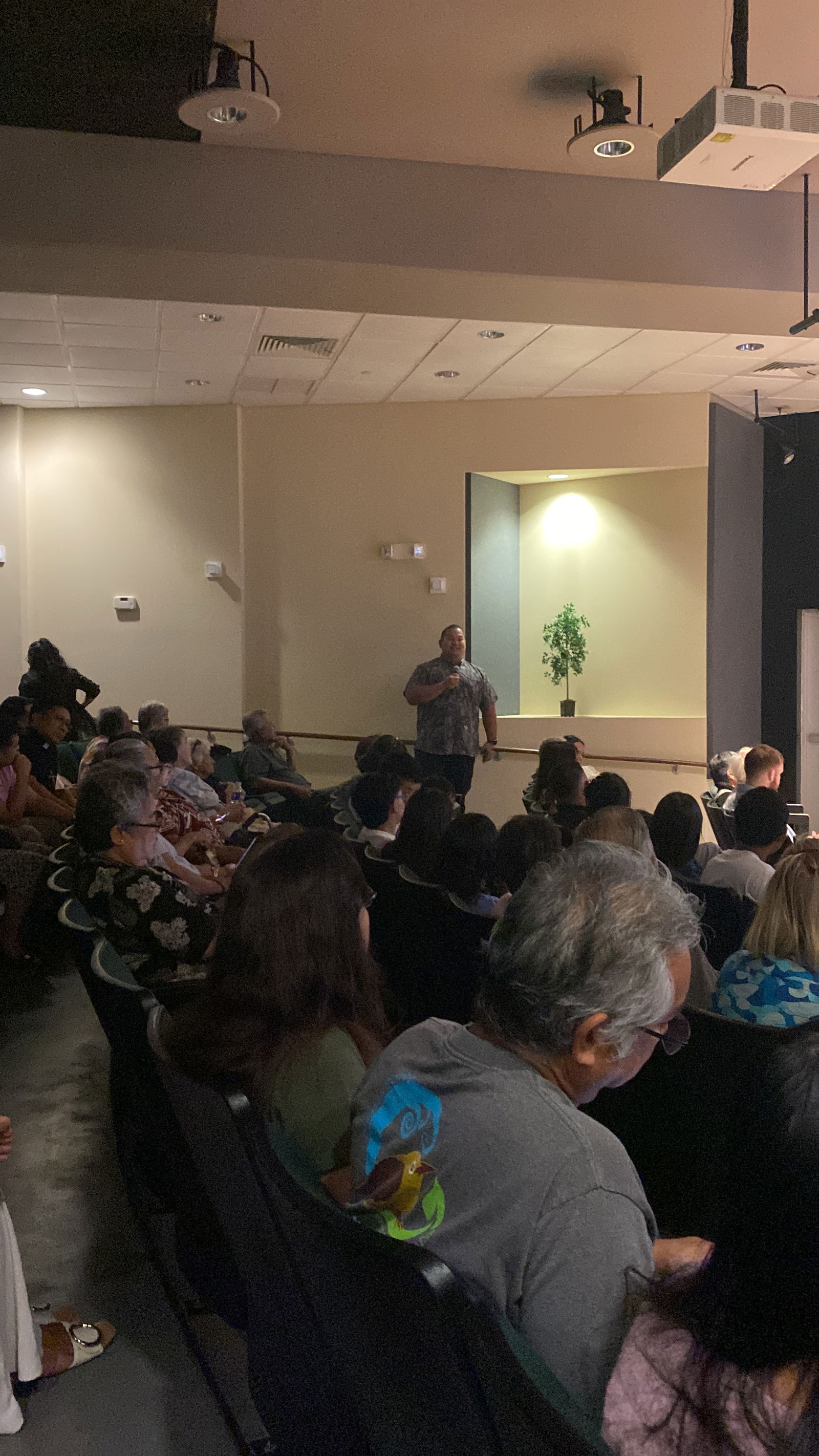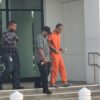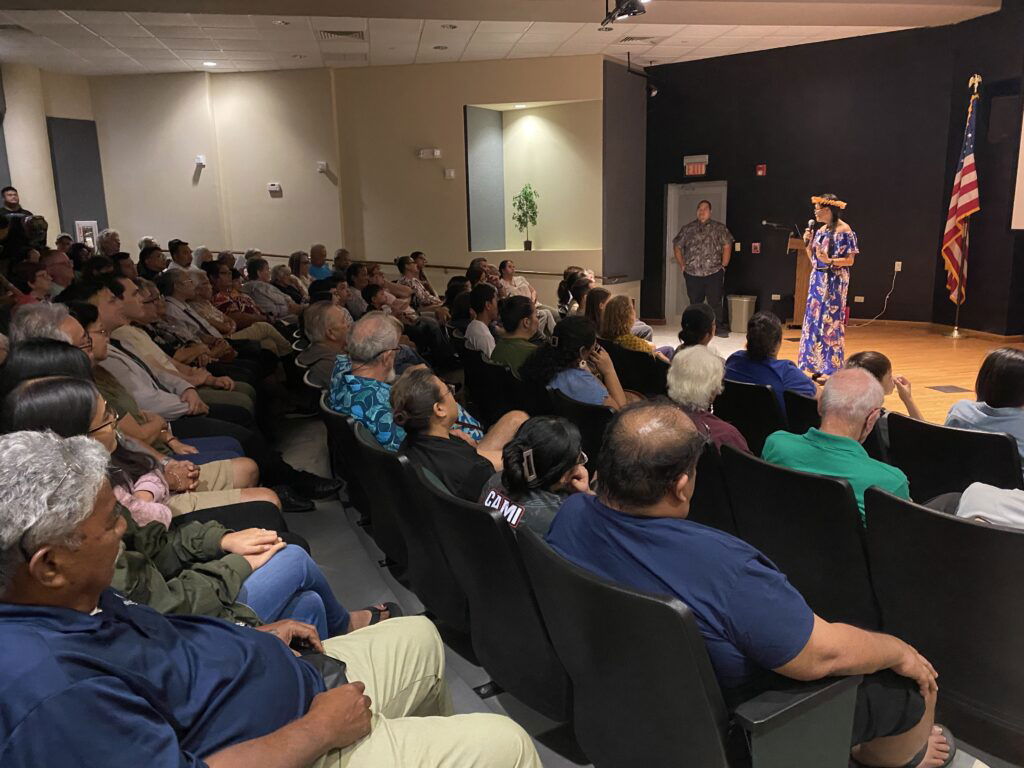THE latest documentary by scholar and historian Rev. Francis Hezel, titled “Islands Reopened,” premiered at the American Memorial Park theater on Tuesday to a capacity crowd.
The film explores life on Saipan during the Trust Territory era under the U.S., focusing on its status as an “off-limits” training area for the CIA; political movements of the time; the rise of the tourism industry and local businesses; the population boom of the 1960s and ’70s; and the ties formed between Saipan natives and Micronesians who migrated from other Trust Territory districts — Palau, the Marshall Islands, Ponape (Pohnpei), Truk (Chuuk), and Yap. Saipan was the capital of the Trust Territory government.
Interviewed for their firsthand accounts were former Washington Rep. Pete A. Tenorio; former Northern Marianas College President Agnes McPhetres; former Gov. Juan N. Babauta; Lino Olopai; Rosa “Chailang” Palacios; Soledad Castro; Herman “Pan” Guerrero Jr.; and Dr. Elizabeth Rechebei, who also served as project manager and collaborator on the film with Hezel.
According to the film’s videographer, Alejandro “Ando” Agulto, the documentary is being prepared for educational distribution to CNMI schools and will also be uploaded to YouTube for free public access. Agulto encouraged the public to follow his Facebook business page, Marianas Visuals, for updates.
During a Q&A session following the screening, Hezel shared that “Islands Reopened” is the first in a planned five-part series on Saipan in the 20th century.
“I always believed Saipan reinvented itself again and again — in Japanese times, German times …. Of course, there were the wartime horrors that have been well-documented,” Hezel said. “Then there was the period after the war, which we’ve talked about here. I wanted to start with something manageable, and I thought those 10 years brought the greatest contact between this place and other parts of Micronesia. It was the beginning of new friendships. It was liaison time, and I think those ties have continued in many ways.”
The documentary weaves together historic photographs and videos of Saipan with the perspectives of interviewees, AI-generated narration, and AI-generated video.
Agulto used Google Gemini to create B-roll footage of Saipan for the segment about the CIA’s use of Marpi as a training ground for Chinese soldiers. Due to a lack of historical footage, he turned to AI-generated visuals to illustrate the narrative. Using AI narration also helped reduce production costs, he said.
“If you noticed, the narrator is AI — because it’s a lot easier than hiring someone else,” Agulto said. “When I started this documentary, it was really tough. I didn’t exist in the 1950s, ’60s, or ’70s. So when Father Hezel gave me hundreds — almost a thousand — photos, I was like, who are these people? I didn’t know who they were or what the events were. There was a lot we didn’t have — especially for the CIA part. No photos, no videos. So I typed into Google, ‘AI, create me a video.’ It was just to depict the story of what they were trying to say.”
Hezel emphasized that many storytellers from the Trust Territory era are still alive and encouraged the audience to reach out to them. He hopes the film serves as a catalyst for reflection and conversation.
“I was also hoping this would inspire people to start thinking about these things,” he said. “We all have stories to add — your own stories — and to continue this work, with or without people like me, to keep telling the story that is so interesting.”

Residents filled American Memorial Park theater to watch the debut of Father Francis Hezel’s new documentary.

Father Francis Hezel

Alejandro “Ando” Agulto











